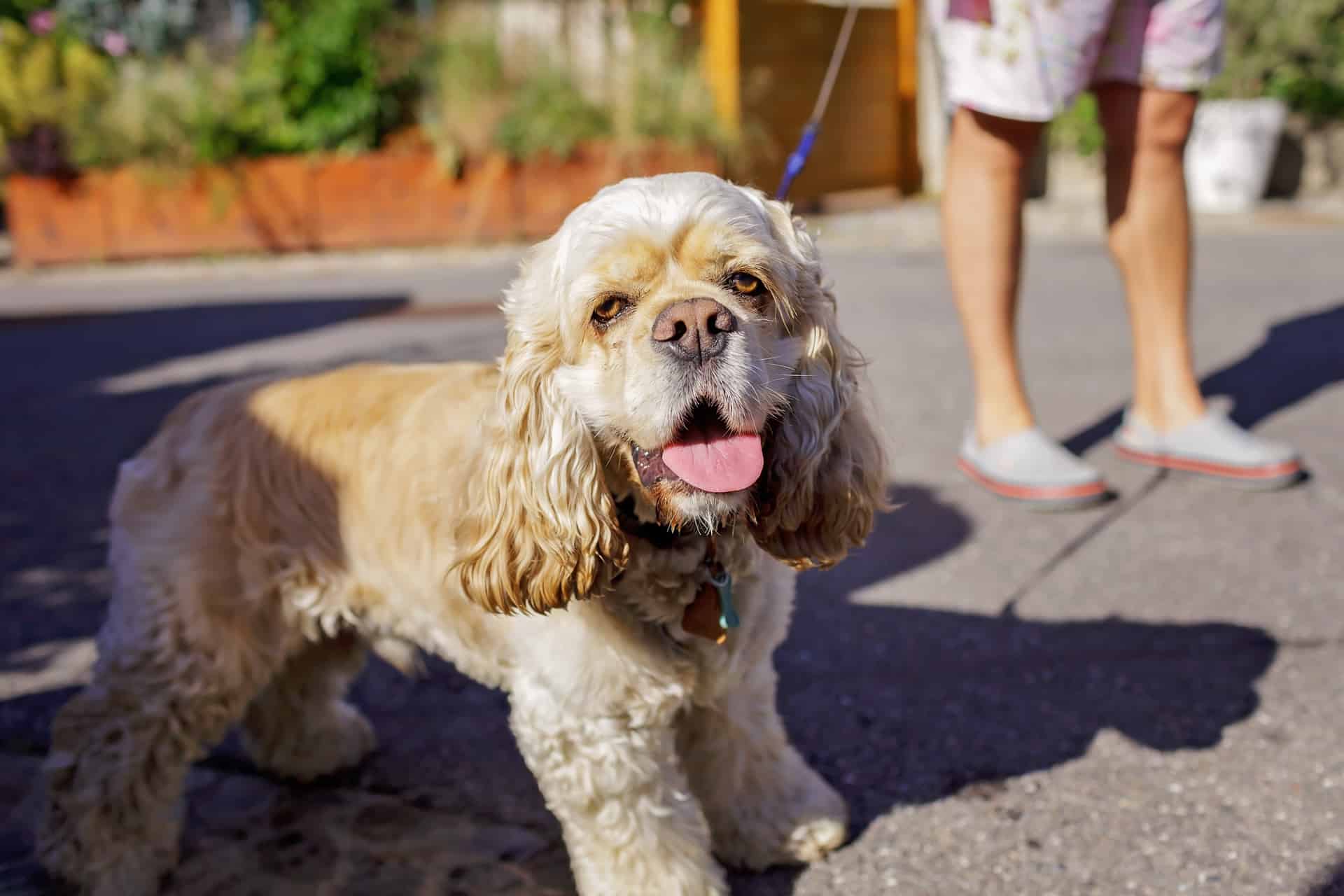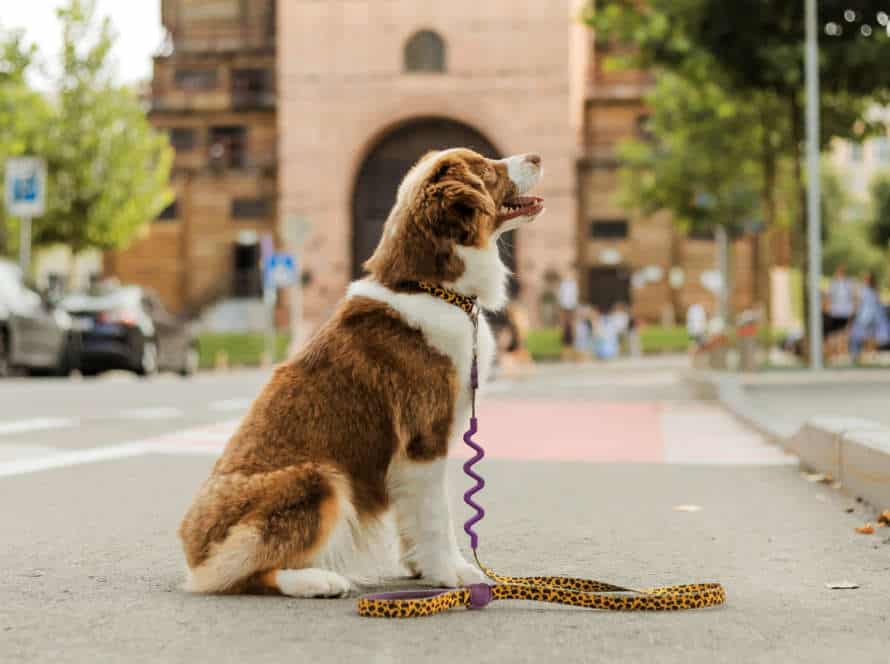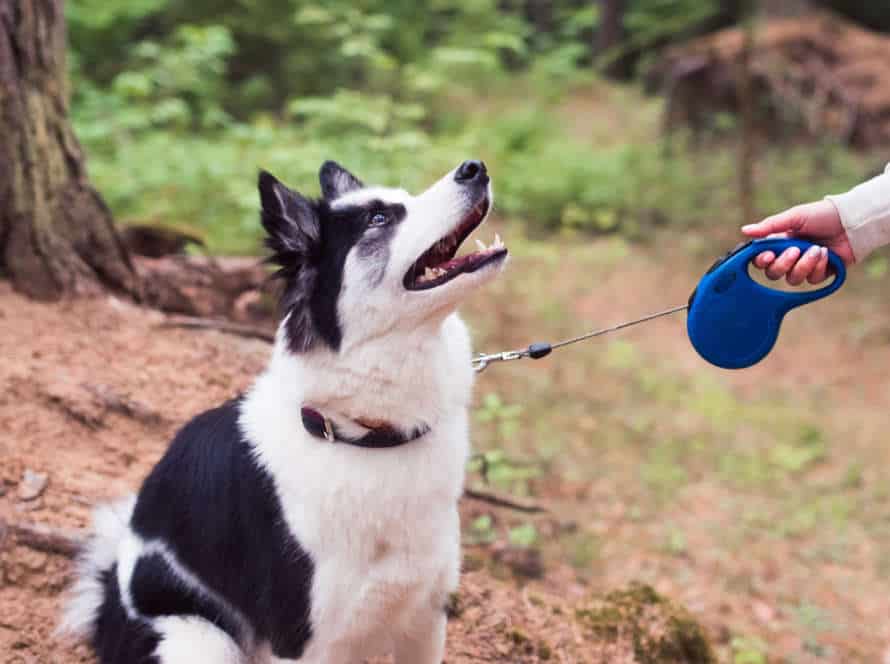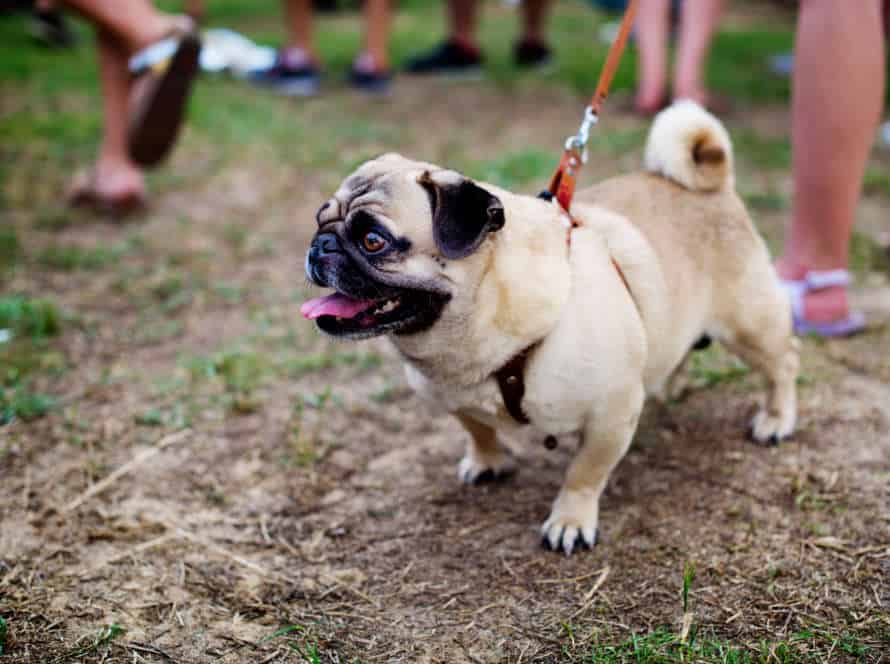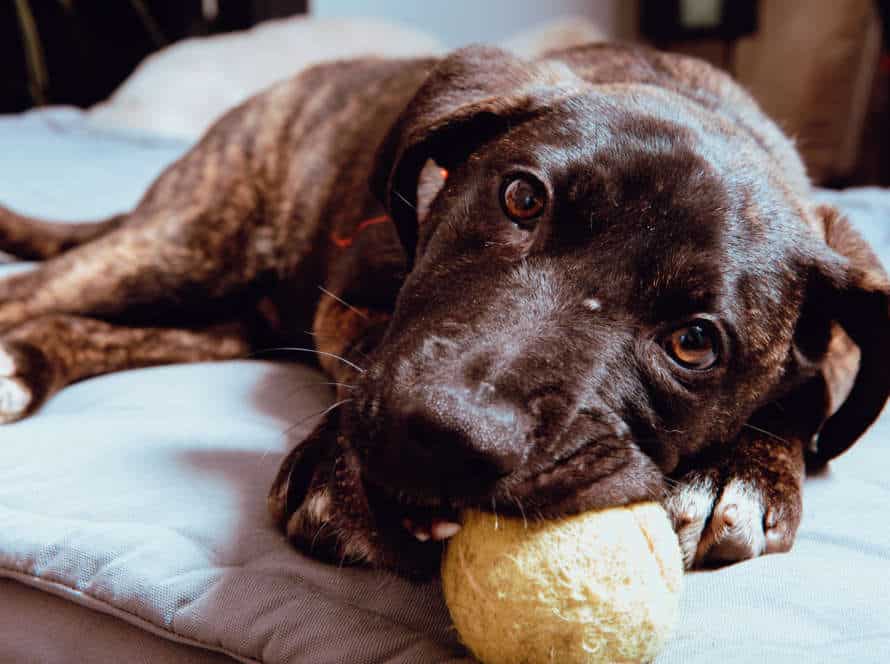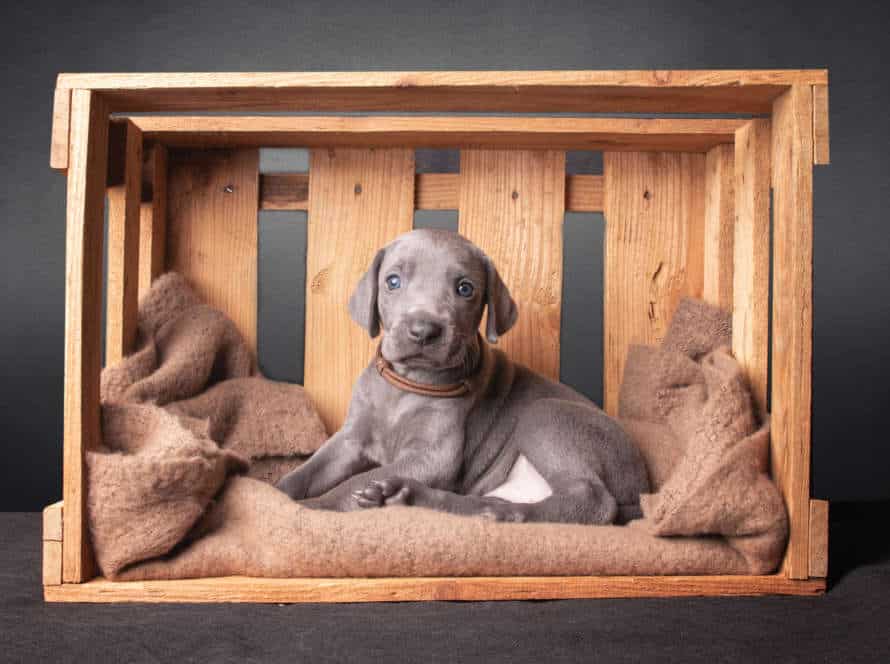Tips for Ensuring Your Puppy’s Comfort with the Leash
Introducing a leash to your puppy can be tough. Here are some tips to make it easier.
- Start Slow: Let them explore the leash. Put it on for short periods.
- Gradually Increase: Reward pup with treats and praise when they behave.
- Leash Fitting: Make sure it’s adjusted right and not pulling them.
- Signs of Discomfort: Watch out for whining, pulling, or biting at the leash. If so, distract them with treats.
- Practice Often: Consistency is key. Make it positive to associate the leash with a happy walk.
- Pro Tip: Start indoors before taking your pup outdoors.
Leash introduction and preparation
Introducing your puppy to a leash? No sweat! Just remember to pre-plan and get the supplies needed: leash, collar, treats and a comfy, safe spot. This section has tips and tricks to make sure your pup is happy with the leash. Get ready!
Introducing the puppy to the leash
Leash training your pup is essential. With the proper prep and techniques, you can get your puppy to be comfy with the leash. Here are some tips:
- Let your pup wear a collar for a few minutes, then gradually increase the time.
- Let your pup sniff and play with the leash on the floor.
- Attach the leash, and let your puppy walk for short stints.
- Reward good behavior with treats and praise.
Pro Tip: Get a lightweight and adjustable leash to ensure your puppy’s security and comfort during the introduction stage.
Ensuring the leash fits comfortably
Preparing to introduce your pup to a leash needs careful attention. Here are some tips for comfy fit:
- Choose one matching the pup’s size. A heavy one for a tiny pup won’t do.
- Select a soft, lightweight material that won’t irritate their skin.
- Adjust the length of the leash accordingly. Not too short or too long.
- Attach the leash to a collar or harness. It should fit snugly, not too tight. One or two fingers should fit between the collar/harness and their skin.
- Make sure your pup is relaxed, no tension when wearing the leash.
Pro Tip: Always supervise your pup wearing the leash. This helps avoid entanglement or inappropriate chewing.
Choosing the right leash for your puppy’s size and breed
Choosing the perfect leash for your pup can make a huge difference in their ease and obedience on walks. Here are some tips to ensure your pup’s comfort:
- Take their size and breed into account when selecting a leash. Smaller breeds may do better with a light and short leash, while a large breed may require a heavy and long leash for control.
- Ease your pup into the leash. Start inside or in a restricted area with the leash connected, but not pulled. Give treats and verbal praise when they stay calm.
- Practice walking outside, but take it slow and short at first. Gradually increase the distance and length. Use treats & positive reinforcement.
- Get a comfy leash material, such as soft cotton or cushioned nylon, and make sure the leash is the right width for your pup’s size and strength.
Pro Tip – Regular exposure to the leash and positive reinforcement can help your pup feel more relaxed and confident during walks.
Leash Training Techniques
Leash training is vital for taking your puppy out. It helps keep your pup safe and lets them know where the boundaries are. Training your pup to use a leash makes things comfy for both of you when you’re in public. So, let’s take a look at the best techniques for leash training your puppy for maximum comfort.
Positive reinforcement training methods
Positive reinforcement training relies on rewarding desired behaviors, instead of punishing undesired ones. When leash training your pup, positive reinforcement techniques can make it a pleasant experience. Here are some tips for making your pup comfortable:
- Introduce the leash gradually, using treats to create good associations.
- Practice indoors first, letting them wear the leash without opposition.
- Start off slow, with short sessions of the leash, so your pup gets used to the harness or collar.
- Gradually extend the leash sessions, rewarding good behavior, and ignoring bad behavior.
- Use vocal commands in a serene and reassuring tone to guide and redirect your pup’s behavior.
- Be patient and stick to positive reinforcement techniques for the best results in training your pup.
Giving treats when the puppy walks correctly on the leash
Giving treats as positive reinforcement when your pup walks correctly on the leash is a great way to leash train. Here are some tips:
- Use treats that your pup loves, like small pieces of cooked chicken or cheese.
- Keep treats close by in your pocket or a treat pouch.
- Start rewarding your pup just for wearing the leash, and then increase the reward for walking without pulling.
- Give the treat soon after the desired behavior to reinforce it.
- Say “good boy!” to further reinforce the behavior.
- Be patient and consistent with this technique to make sure your pup feels confident on the leash.
Using verbal praise for good behavior
Verbal praise is a great way to positively reinforce good leash behavior in your puppy. Speak in a high-pitched, happy tone when they do something well. Say things like “good boy” or “good girl” to reward them. Offer treats too!
Let your puppy explore the outdoors on a leash. Give them time to sniff around and get familiar with their environment.
Be patient and gentle with your pup – even if they’re being difficult. Remember: consistency is key. Stick to the same techniques each time you take them for a walk. Eventually, they’ll learn to associate calm leash walking with positive reinforcement and rewards.
Clicker training for leash manners
Clicker training is a great way to teach your pup leash manners. Follow these steps:
- Get your pup used to the clicker by clicking and rewarding them.
- Put the leash on your pup’s collar or harness and let them get used to it.
- When pup walks with you, click and treat.
- If pup pulls, stop and wait for them to come back. Then click and treat.
- Do this every time, gradually increasing the distance and length of walks.
Pro tip: Be patient and consistent, and use positive reinforcement to reward good behaviour. In time, your pup will love going for walks with you and have perfect leash manners.
Gradual leash acclimation training methods
Leash training your puppy? Here are some tips!
- Get your pup used to the collar or harness. Let them wear it around the house for short periods.
- Attach the leash to the collar/harness and let your pup drag it around the house – with your supervision.
- Pick up the leash and follow your pup around the house with it. Give positive reinforcement and treats.
- Take it outside – keep the leash slack.
- Increase the length of walks slowly. Give positive reinforcement and treats for good behaviour.
Time and patience will help your pup become comfortable and confident on the leash.
Starting with short indoor leash sessions
To start leash training your pup, short indoor leash sessions are the ideal way. Here are some tips:
- Put the leash on your pup’s collar indoors – this helps them get used to the extra weight.
- Let them explore the space while wearing the leash, then take it off.
- Hold the leash and let the puppy follow you around the room.
- Give commands like ‘sit‘, ‘stay‘ and ‘come‘ while they have the leash on.
- Gradually increase the session length as they become more comfortable.
Pro Tip: Be patient and use positive reinforcement tactics like treats and head pats. This encourages good behavior!
Gradually increasing the length and difficulty of the walks
To leash train your pup, gradually increase the length and difficulty of the walks. New puppies may be scared or overexcited by the leash, so be patient. Here are some tips:
- Start with short walks in a quiet area.
- Use positive reinforcement like treats and verbal praise to keep your pup walking next to you and stop it from pulling.
- Gradually up the walks’ length & complexity. Expose your pup to new sights, smells and sounds.
- Be patient – every pup is different and may take longer to feel OK with the leash.
- Reward your pup with a special treat or toy after a successful walk. This will reinforce good leash behavior.
Regular practice sessions to reinforce good habits
Training your pup to walk on a leash can be tricky. But, three key regular practice sessions can help create good habits and make your pup more at ease with the leash.
- Keep the sessions short but frequent; especially during the start of the process. This will help your pup associate the leash with good feelings.
- Use the same commands and techniques each time; so your pup knows what to expect.
- Give your pup lots of positive reinforcement during the session; such as verbal praise and treats. This makes sure your pup has a good time and is more successful in training.
These regular practice sessions with consistency and positivity will help make sure your pup is comfortable with the leash.
Common Leash Training Problems and Solutions
Leash training can be difficult for some puppies. With patience, regularity, and the correct techniques, you can aid your pup in feeling more cozy with the leash. Common issues may be fear, joy, or defiance.
Let’s look at some of the usual training issues and how to solve them:
Pulling on the leash
Leash pulling is a common training issue for owners. Both pup and person can get frustrated, but there are ways to make it cozy and fun. To help your furry buddy, try these tips:
- Choose a leash and harness that fits right.
- Train in a peaceful and quiet place.
- Use positive reinforcement for good behavior, and discourage pulling.
- No painful or mean training methods.
- Be steady and patient with your pup’s learning.
Remember: Leash training needs time and patience. With regular training and reinforcement, your pup will learn to walk calmly on the leash.
Using a no-pull harness
A no-pull harness is an excellent solution for leash-training problems. Pressure is distributed across the puppy’s chest, preventing choking and stress on the neck. Here are some tips:
- Choose the right size. Make sure it fits snugly.
- Introduce the harness gradually and use positive reinforcement.
- Attach the leash to the front clip of the harness.
- Praise and reward your puppy when they show good walking etiquette.
- Patience and consistency will make walks pleasant.
Pro-tip: Choose a front-clip harness that fits your puppy’s breed and size.
Stopping the walk when pulling occurs
Leash-walking your pup can be tricky. Pulling is a typical issue. It can be disheartening and even distressing for the owner. To cease the walk when pulling happens, adhere to these tips:
- Bring ’em to Attention: When your pup pulls, stop straight away and pause for some seconds. This will help to regain your pup’s focus on you.
- Reward Good Behavior: When your pup walks without any tension or pulling, reward him with his favorite treats. This will motivate him to maintain the same behavior and set up a positive connection with the leash.
- Using the Right Gear: The perfect gear makes all the difference. Utilize a collar or harness that fits well and is cozy. Make sure the leash isn’t too tight or too loose.
- Creating a Positive Experience: Leash-training is an enriching experience for you and your pup when done positively. Create a secure and distraction-free environment, provide encouragement and rewards for good behavior, and make leash-training as fun as you can.
Adhering to these tips will make sure that leash-walking your pup is an enjoyable and safe experience for you both.
Encouraging the puppy to walk next to you using positive reinforcement training
Train your pup to walk with you with positive reinforcement for the best leash manners and a strong bond. Follow these three steps!
- Use a short leash – it gives you better control and keeps pup focused.
- Praise and treats work well to keep pup close.
- Finally, be patient – leash training takes time and patience. Short sessions and end on a positive note. With consistency and good vibes, pup will love to walk with you!
Fear or anxiety around the leash
Fear ’round the leash? It’s common amongst pet owners. Here’re tips to ease your puppy’s discomfort and make training fun.
- Bring in the leash slowly. Let your pup investigate it without fear.
- Increase the time your pet wears the leash, start short and go up to thirty minutes daily.
- Link the leash with positive experiences, like treats or playtime. That’ll help your pup have a good association with the leash.
- Use a comfy, well-fitting leash to steer away from causing any distress. And reward your pet for good behavior.
Keeping training sessions positive and stress-free
Having a positive & relaxed leash training sesh for your pup is super important. Here’s some tips to keep in mind:
- Positive reinforcement: Give treats, praise & show affection when they do it right.
- Make it a routine: Incorporate it in their daily life, like before or after meals.
- Go slow: Start with shorter & easier sessions, then progress to longer & more complex ones.
- Choose the right leash: Pick one suitable for their size & breed.
- Be patient & determined: Leash training takes time. Don’t give up if it’s hard to learn.
By doing this, you’ll be able to make it enjoyable & stress-free for both of you.
Gradually acclimating the puppy to the leash and outdoor environments
Introducing your pup to the leash and outdoor settings is essential. Here are some helpful tips:
- Place the leash by their bed. Let them smell and explore it.
- Clip the leash on their collar inside the house, so they get used to wearing it.
- Start with short walks nearby and slowly increase the distance.
- Reward good behavior with treats and praise. Stop if they’re overwhelmed.
- Be patient and make leash training a fun experience for your pup.
Seeking the help of a professional trainer or behaviorist for more severe cases.
Leash training problems are common for pet owners. These include leash biting, pulling, and a puppy’s inability to walk on a leash. Consistent training and patience can solve these challenges. Although, for more severe cases, it’s wise to get help from a pro trainer or behaviorist.
A professional trainer can provide advanced techniques for leash training and handling aggressive behavior. They can also help with the best leash and collar options for your pet’s needs.
Sometimes, an inexperienced owner can make a dog fearful or uncomfortable, causing serious behavioral issues. A dog trainer is essential in such cases.
Pro tip- Make sure your puppy is relaxed while wearing a leash. Tugging can hurt your pet and slow down the training. A confident puppy will learn quickly and easily get used to the leash.
Frequently Asked Questions
Q: When should I start training my puppy to walk on a leash?
A: It’s best to start leash training as early as possible, preferably around 8-12 weeks old.
Q: What type of leash should I use for my puppy?
A: Use a lightweight leash that is about six feet long and made of durable materials. A retractable leash is not recommended for young puppies.
Q: How can I get my puppy comfortable with wearing a leash?
A: Allow your puppy to explore the leash and get used to it by letting them wear it indoors for short periods of time before introducing it on outdoor walks. Keep the leash loose and offer plenty of treats and praise.
Q: How can I prevent my puppy from pulling on the leash?
A: Teach your puppy to walk on a loose leash using positive reinforcement training. Stop or change directions when your puppy pulls and reward them when they walk calmly beside you.
Q: What are some common mistakes to avoid when leash training my puppy?
A: Avoid using punishment or force, never yank on the leash, and do not allow your puppy to pull you. Be patient and consistent with training.
Q: How often should I walk my puppy on a leash?
A: Puppies require several short walks each day to burn off energy and get exercise. Aim for at least three walks per day, gradually increasing in duration as your puppy grows older.

